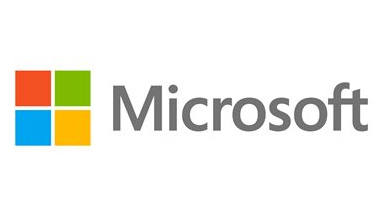Microsoft heralds Windows 8's year-end progress but stays mum on Surface
No designs on abandoning tabs

Microsoft dished its second quarter earnings today without too many surprises.
Windows 8 sales were the biggest news the company had to share, though the figures weren't anything we haven't heard before - Microsoft said it sold more than 60 million licenses of the new operating system since it launched in October.
Other than that, Microsoft's numbers stayed pretty steady compared to the same quarter last year. Its total revenue rose to $21 billion in the last three months of 2012, compared to $20 billion at the end of 2011.
The tech giant's operating income slipped a few hundred million in the last year to about $7.8 billion from just below $8 billion in 2011.
Windows 8's winnings
Windows 8 seemed be the best bread winner for Microsoft. Windows Division posted a revenue of $5.88 billion, which is up 24 percent from last year.
Though Microsoft touted its Windows 8 sales, it seems like it still has some ways to go before it dominates the PC landscape. CFO Peter Klein noted that about 60 percent of enterprise desktops worldwide still are operating on Windows 7.
Klein painted the launch of Windows 8 as a bold rebuilding of the desktop environment that will take a bit of time to gain traction among consumers.
Get daily insight, inspiration and deals in your inbox
Sign up for breaking news, reviews, opinion, top tech deals, and more.
"This is a big, ambitious reimagining of Windows and this quarter was the first step in that process," Klein said during a Q&A with investors.
"So the traction, the ramp, should get better over time? So we should not be judging the cycle over the December quarter?" one caller asked.
"I highlighted the things that drive that, exactly," Klein replied.
But Windows 8 seems to be keeping pace with Windows 7 sales when it just launched. With Windows 8 selling 60 million copies in the first three or so months after release, both operating systems moved about 20 million licenses a month.
Windows 7 was able to keep up that sales rate for the first nine months, and we'll just have to wait and see how the newest version fares.
On the Surface
Though Microsoft shared plenty of figures, some numbers were notably absent: Microsoft Surface sales.
During the call, Microsoft executives were careful to dance around the sales numbers of new touch tablets, giving few clues to how the Surface RT (the Surface Pro won't go on sale until Feb.) is actually fairing.
Though the Xbox 360 remains to be the top selling console, the Entertainment and Devices Division only posted $3.7 billion in revenue, down 11 percent from last year and 2 percent from Q1.
Since Surface sales are lumped in with game sales, it's hard to get a precise gauge of how the tablet is selling. There are plenty of other devices included in those numbers, but something has to be dragging down that revenue.
Price points
Throughout the investor call, the point was repeatedly brought up that the price tag of Surface tablets is a little too high for consumers' tastes, though nothing was said explicitly.
Klein said the launch of Windows 8 provided a good learning experience for the company, especially when it comes to the price of a tablet.
"Obviously we had some limited distribution [of Surface] this quarter in our stores, and as you know, we're excited about expanding that," he said.
"We learned a lot this quarter. We learned a lot about the types of experiences and scenarios, and to some extent, the price points that customers are looking for in their devices."
He said the key was finding the right price points for the right devices, and folks should expect to see a greater variety of devices with more diverse prices.
Though Microsoft was shy to share news of how Surface was doing, it doesn't seem like the big M is giving up on tablets. Klein said the company recently increased production of Surface tablets, and is expanding their availability into third-party retailers.
Next month, Microsoft will be expanding Windows RT into 14 more countries, and at the same time release Surface Windows 8 Pro.